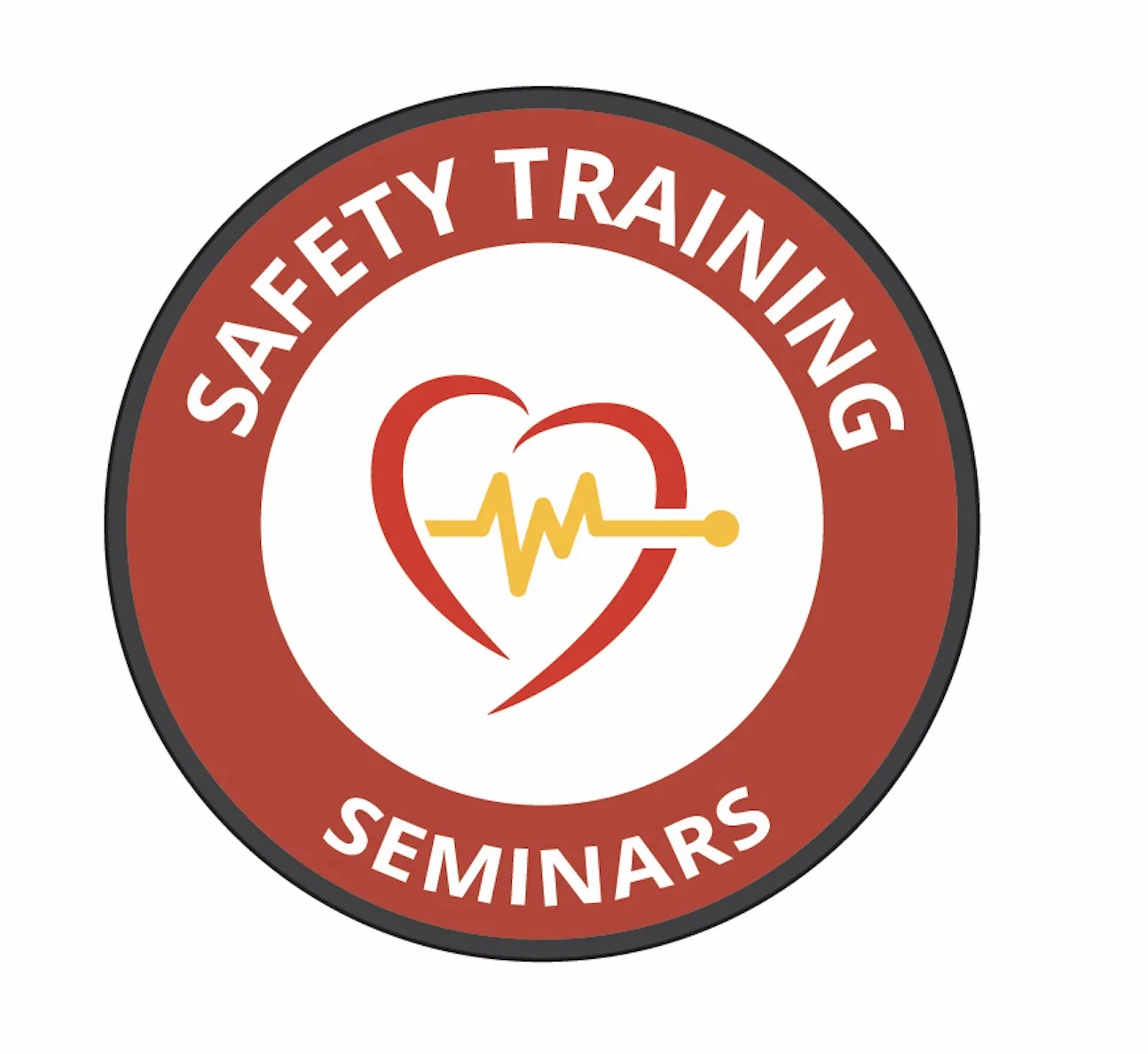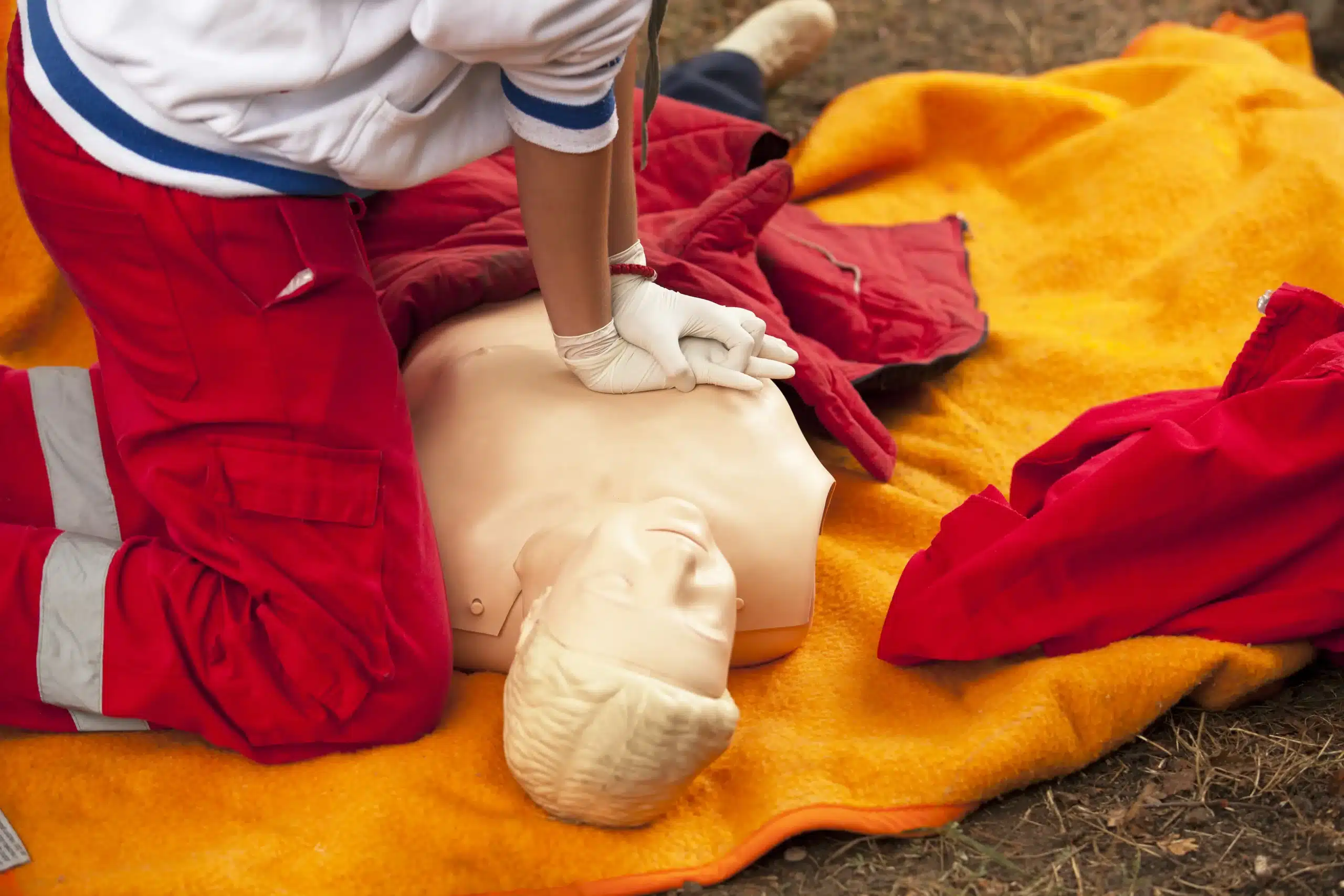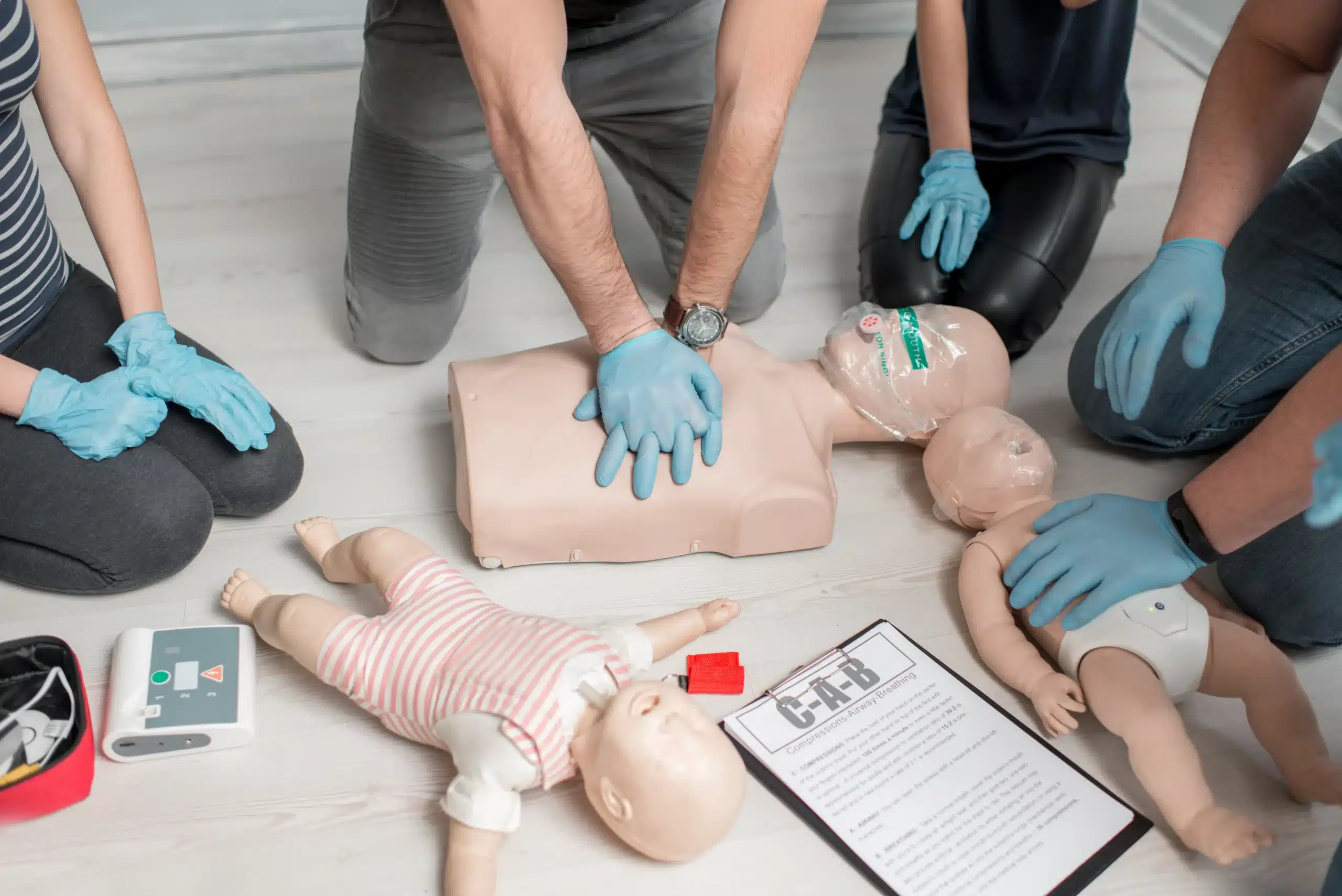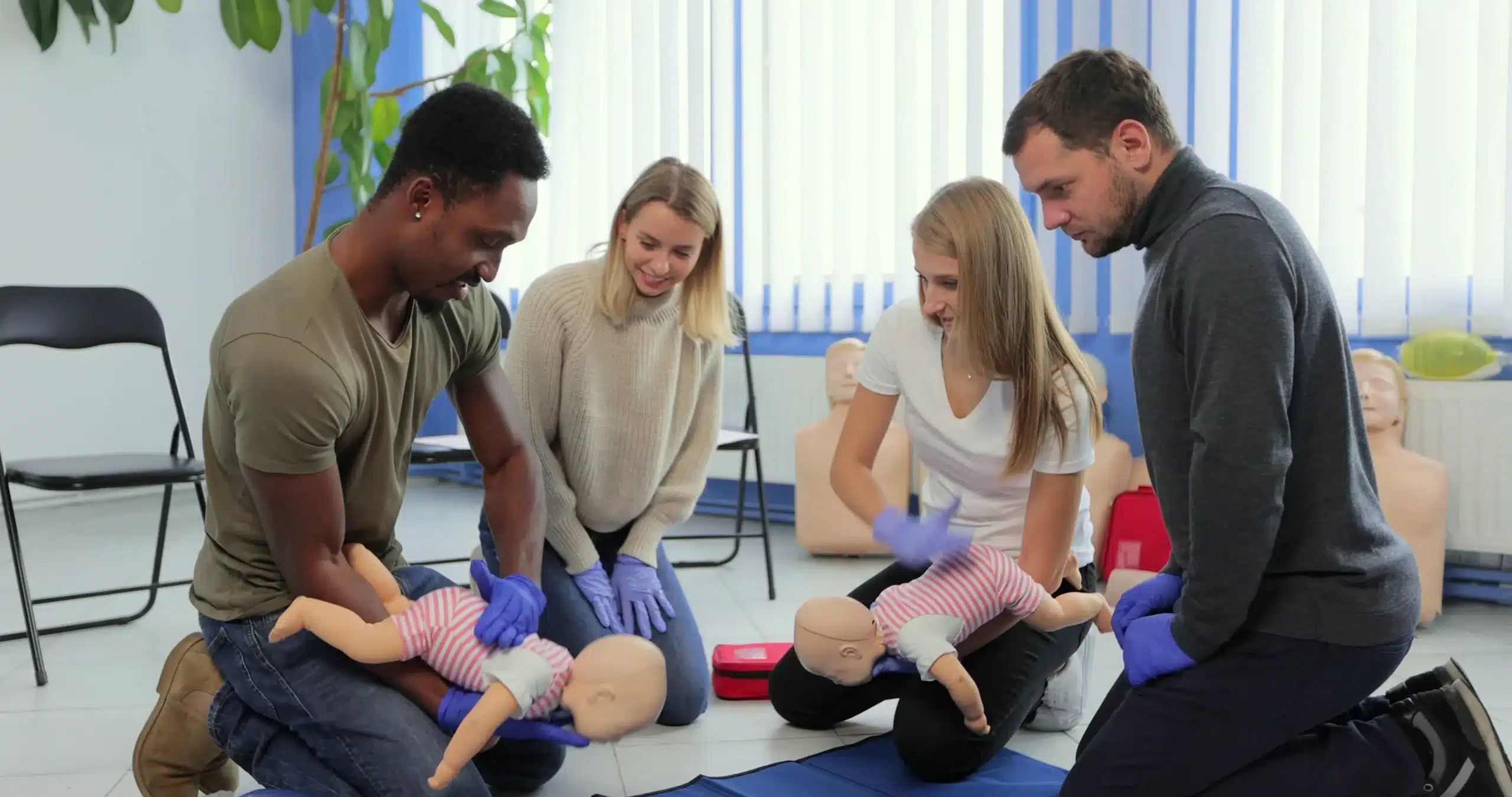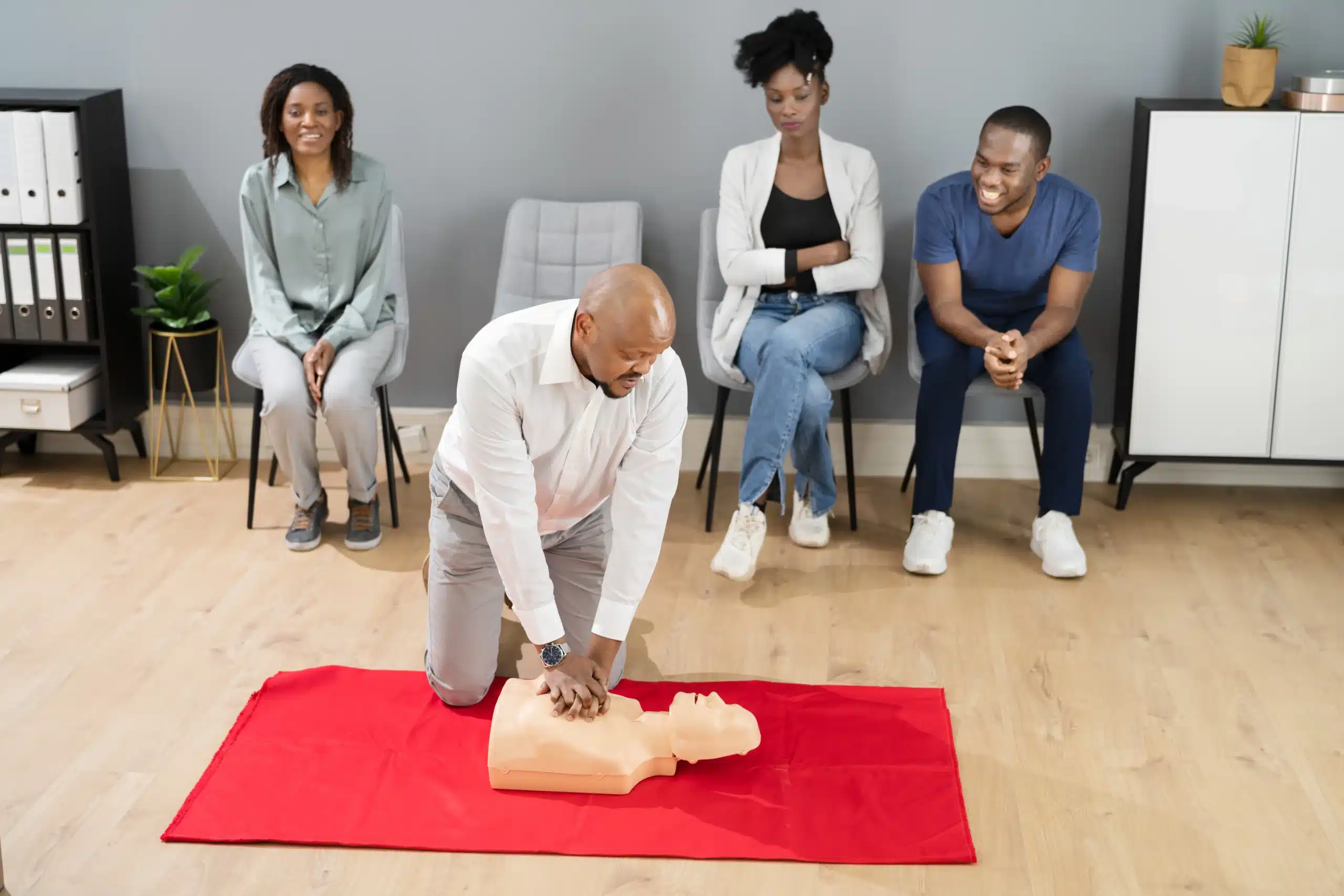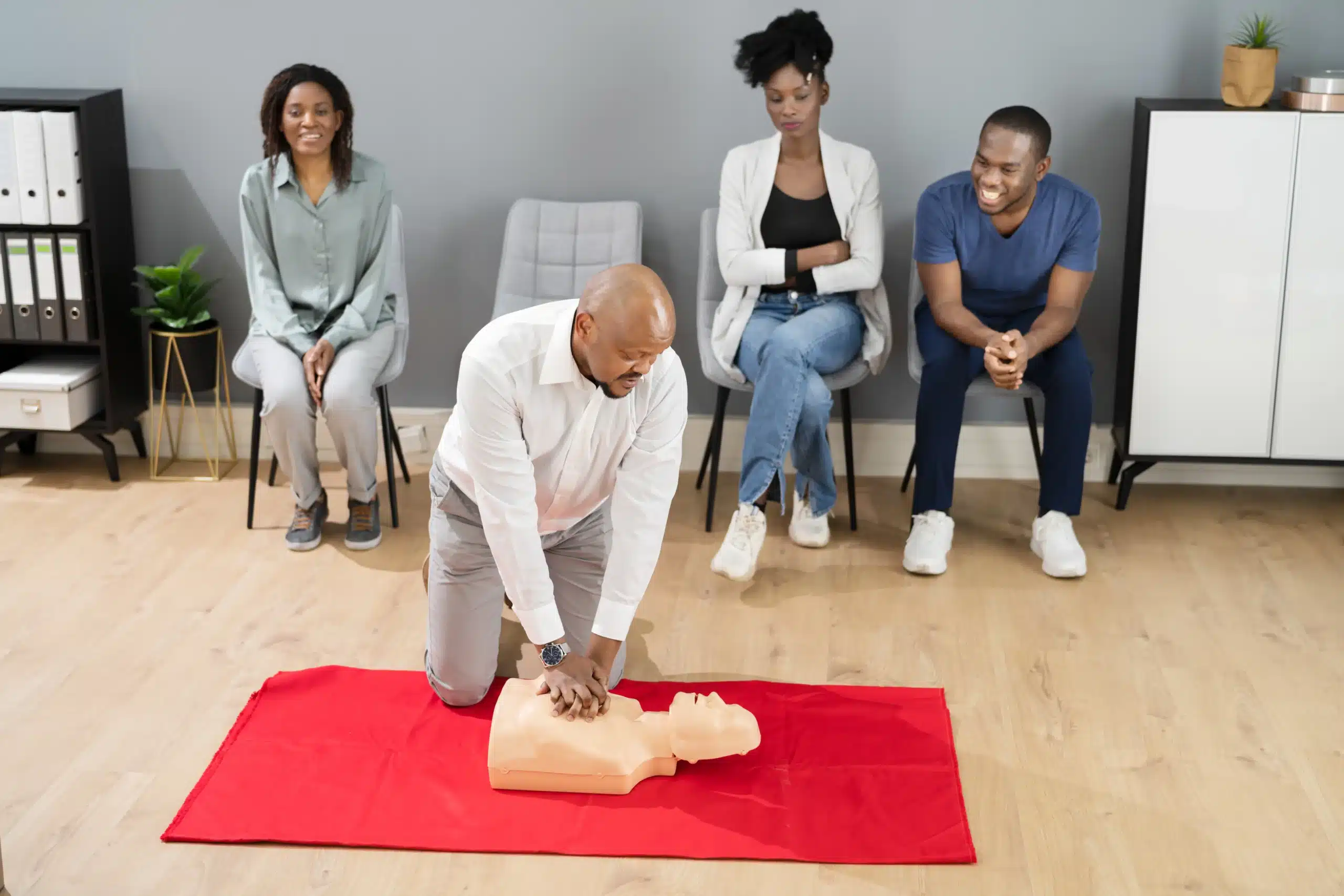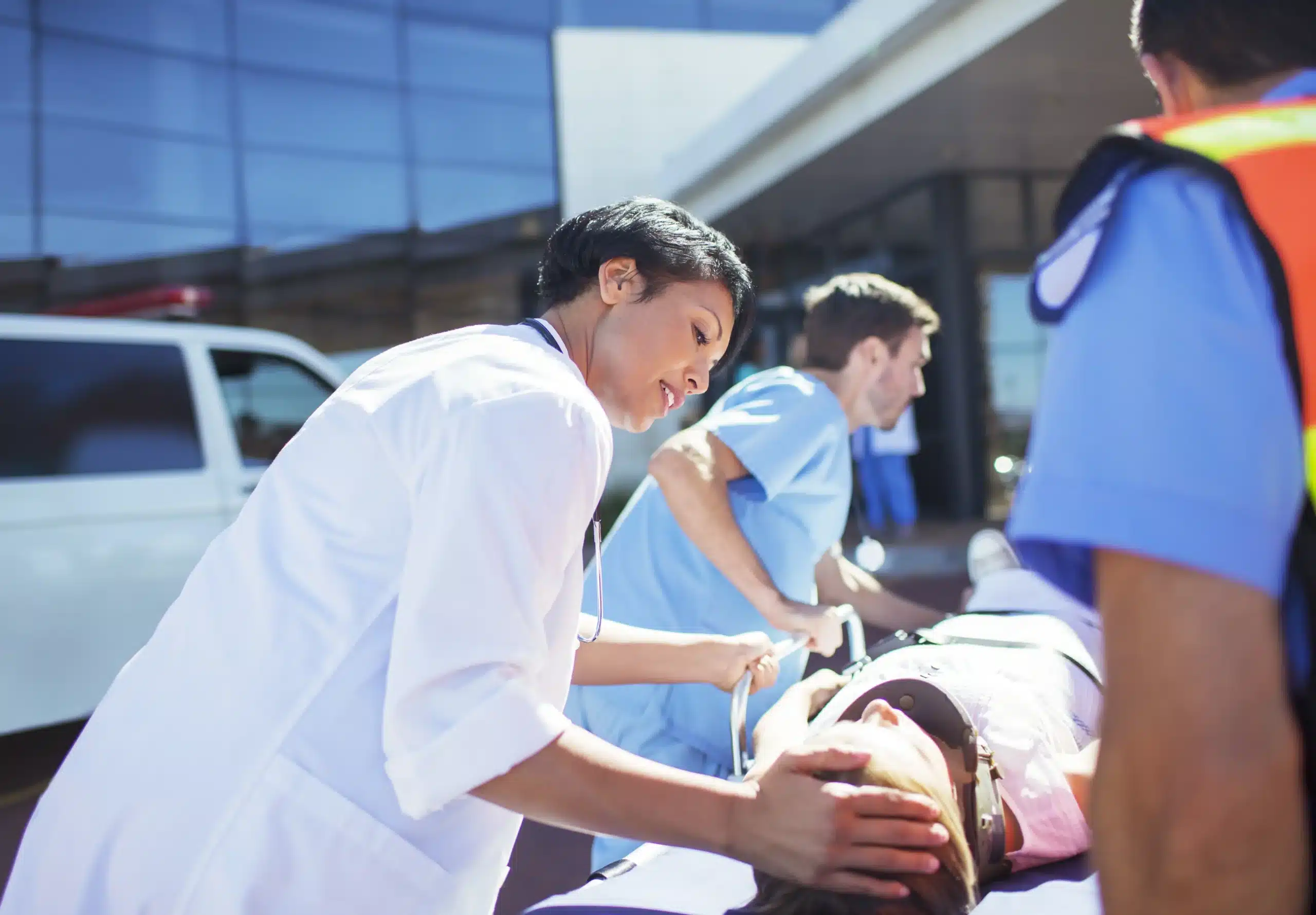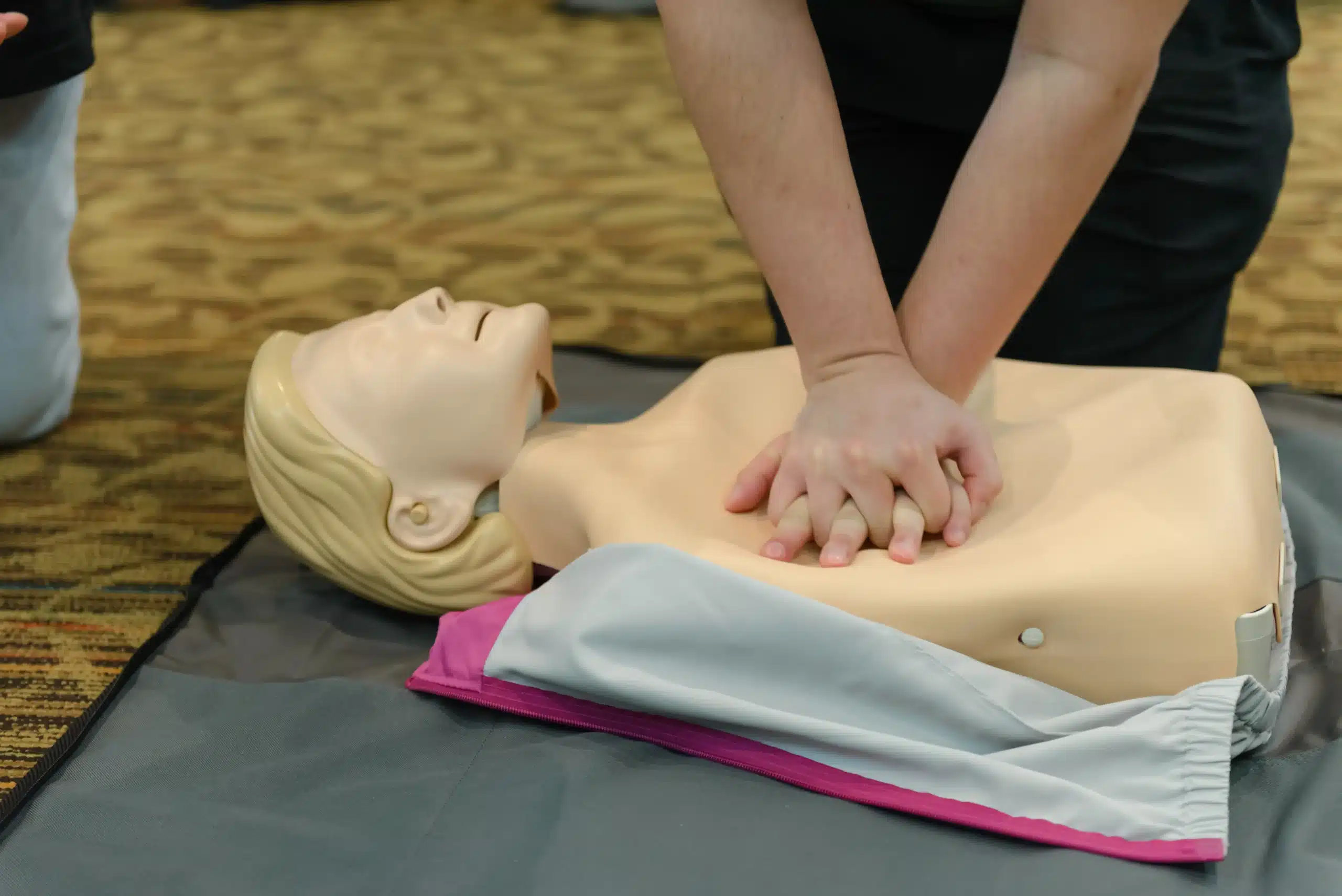Working in healthcare or aiming to become a first responder? Then you know how crucial it is to be prepared for any medical emergency. Basic Life Support (BLS) certification goes beyond standard CPR, giving you the advanced skills to handle respiratory distress, cardiac arrest, and other critical situations. This comprehensive guide covers everything from the skills you’ll learn to where to find BLS certification near me, specifically focusing on options in the San Francisco Bay Area. We’ll also explore different learning formats, costs, and how BLS certification can open doors in your career.
Key Takeaways
- BLS certification goes beyond basic CPR: It equips healthcare providers and first responders with advanced life-saving skills, including CPR, AED use, and airway management, to handle various medical emergencies. Choose a course format—in-person, online, or blended—that suits your learning style and schedule.
- Finding the right BLS course requires research: Consider factors like accreditation, employer requirements, cost, instructor qualifications, and reviews to make an informed decision. Compare course offerings to find the best fit for your needs and budget.
- BLS certification opens career doors: It’s a valuable asset for healthcare professionals and other fields, demonstrating a commitment to safety and the ability to handle emergencies. Maintain your certification to meet professional standards and enhance your job prospects.
What is BLS Certification & Why Do You Need It?
What is Basic Life Support (BLS)?
Basic Life Support (BLS) takes standard CPR to the next level. It’s designed for healthcare providers like doctors, nurses, paramedics, and other trained first responders, giving them the skills to manage life-threatening emergencies. BLS includes the core elements of CPR but also covers techniques for handling breathing problems and other urgent medical situations. It stresses early intervention and a systematic approach to patient care, beginning with a quick assessment and moving through a series of life-saving actions.
What Skills Will You Learn in BLS Training?
In a BLS course, you’ll develop a wide range of skills, including adult, child, and infant CPR. You’ll learn how to use an automated external defibrillator (AED), a vital tool for restoring a normal heart rhythm. The training also teaches you how to relieve choking in both conscious and unconscious individuals. Beyond these core skills, BLS training emphasizes the importance of teamwork during resuscitation, ensuring coordinated and efficient responses in stressful situations. This means clear communication, defined roles, and smooth transitions between steps.
Why is BLS Important for Healthcare Professionals and First Responders?
BLS certification is essential for healthcare professionals and first responders for several key reasons. It equips them to handle medical emergencies with confidence, going beyond basic CPR to deliver more advanced care. This higher level of training can dramatically improve patient outcomes, boosting survival rates and reducing long-term complications. BLS certification is often a job requirement in healthcare, showing a commitment to patient safety and high-quality care. For those working in healthcare or emergency response, maintaining a current BLS certification is key for career growth and professional credibility. It confirms they have the latest knowledge and skills to provide effective care in critical situations. For those in the Bay Area, you can find BLS classes near you.
Find BLS Certification Courses Near You
Finding the right BLS certification course takes a little digging, but it’s manageable. Here’s how to find options that suit you:
Use Online Course Locators
Several organizations offer online search tools to help you pinpoint BLS courses nearby. The American Heart Association website has a comprehensive course locator. You can also find BLS classes through the American Red Cross and other training providers. Simply enter your zip code or city to see a list of available courses, schedules, and training centers. For Bay Area residents, Bay Area CPR maintains a list of upcoming courses.
Check Local Training Centers
Many community colleges, hospitals, and dedicated safety training centers offer BLS certification courses. Check with local organizations like Safety Training Seminars, which provides a wide range of safety courses, including BLS, throughout Northern California. Contacting these centers directly can give you more specific information about course schedules, costs, and formats.
Find Healthcare Institutions that Offer BLS Training
Hospitals and other healthcare institutions often provide BLS training for their staff and sometimes open courses to the public. Check with hospitals in your area to see if they have any upcoming BLS training sessions. These courses are often taught by experienced healthcare professionals, offering valuable real-world insights.
Top BLS Certification Providers
Here are some leading organizations offering BLS certification:
American Heart Association (AHA)
The AHA sets the standard for BLS training. Their courses are designed for healthcare professionals and cover essential life support skills.
American Red Cross (ARC)
The American Red Cross offers BLS certification courses for healthcare providers and the general public, with a long history of providing high-quality first aid and CPR training.
National CPR Foundation
The National CPR Foundation offers affordable online BLS certification courses.
ProTrainings
ProTrainings provides various online BLS courses for both healthcare professionals and the general public.
Health & Safety Institute (HSI)
HSI offers BLS training programs for healthcare providers, public safety professionals, and students in related career training programs.
Bay Area CPR
Bay Area CPR offers AHA-certified BLS training throughout the San Francisco Bay Area, including blended learning options combining online coursework with in-person skills sessions.
Explore BLS Training Formats
Finding the right BLS training format is key to successfully completing the course and confidently applying your skills. Let’s explore the most common options: in-person, online, and blended learning. Each has its own advantages, so consider your learning style and schedule when making your choice.
In-Person Courses: Learn Hands-On
In-person BLS training offers a structured, hands-on learning environment. These courses provide face-to-face interaction with certified instructors who guide you through the material and provide real-time feedback. This format is especially beneficial for those who learn best through hands-on practice and prefer direct interaction. You’ll have the opportunity to ask questions, practice skills on mannequins, and work through scenarios in a supportive setting. This immersive experience can build confidence and ensure you’re fully prepared to respond to real-life emergencies. Bay Area CPR offers in-person training at various locations.
Online BLS Certification: Train on Your Schedule
If you need more flexibility, online BLS certification might be a good fit. Online courses allow you to learn at your own pace, fitting the training around your busy schedule. You can access course materials online, often including videos, interactive exercises, and downloadable resources. This format is perfect for those juggling work, family, or other commitments. While online courses offer convenience, it’s important to choose a reputable provider that aligns with American Heart Association guidelines to ensure you receive high-quality training.
Blended Learning: Combine Online and In-Person Training
Blended learning combines the best of both worlds. You’ll complete the online portion of the course at your own speed, covering the theoretical knowledge and concepts. Then, you’ll attend an in-person skills session to practice and demonstrate your skills with a certified instructor. This approach offers flexibility while still providing the essential hands-on training component. Blended learning is a great option for those who want a more comprehensive learning experience and the opportunity to refine their skills under expert guidance. The American Red Cross is a popular provider of blended learning courses.
How Much Does BLS Certification Cost?
Knowing the price range for BLS certification helps you budget and compare courses. Several factors influence the total cost, so understanding these will help you find the best value.
Average BLS Course Prices
BLS certification typically costs between $70 and $100. However, prices can range from $50 to $150 depending on your location, the training organization, and the certification type. For example, BLS classes in the San Francisco Bay Area usually fall within this range, but prices vary based on the provider and what the course includes.
What Affects Course Costs?
Several factors contribute to the overall cost of BLS certification. Course format is a key factor. In-person training often costs more because of facility overhead, equipment, and instructor fees. Online BLS courses sometimes offer a lower price point. Blended learning programs, combining online and in-person components, may fall somewhere in between.
The training provider also influences the cost. Established organizations like the American Heart Association or the American Red Cross may have different pricing structures than smaller, local training centers. Bay Area CPR offers competitive rates and flexible scheduling options.
Finally, the course content itself can affect the price. Some courses may include additional certifications, like First Aid or CPR/AED training, potentially increasing the overall cost. Courses designed for specific audiences, such as healthcare providers, might also have different pricing than those for the general public.
Find Discounts and Promotions
Look for discounts or promotions to save on BLS certification. Some providers, like American BLS, offer coupons or promo codes that reduce the course fee. Others, such as the American Red Cross, may offer occasional discounts on training supplies or bundled courses. Check with your employer or professional organization, too, as they may have partnerships with training providers that offer discounted rates. Comparing prices and exploring available discounts is always wise before choosing a course.
Get Your BLS Certification: Process and Renewal
So, you’re ready to get your BLS certification—great! Here’s what to expect, from the class itself to keeping your skills sharp.
Course Duration and Content
BLS courses in the San Francisco Bay Area usually take between four and six hours to complete. The content covers essential life-saving techniques, including CPR for adults, children, and infants, how to use an AED, and relief of choking. You’ll also learn about the chain of survival and how to work effectively as part of a team during a medical emergency. Many courses, like those offered by Bay Area CPR, follow American Heart Association guidelines.
Exams and Skills Assessments
BLS certification involves both a written exam and a practical skills test. The written portion assesses your understanding of the concepts and protocols. The skills test requires you to demonstrate your proficiency in performing CPR, using an AED, and providing other life-saving interventions. Your instructor will guide you through the process and ensure you’re fully prepared.
Get Your BLS Certification Card
Once you’ve successfully completed the course and passed both the written and skills assessments, you’ll receive your BLS certification card. This card is proof of your qualification and is often required for employment in healthcare settings. Some organizations, like the American Red Cross, offer digital certificates that you can access online.
How Long Does Certification Last & How Do You Renew?
Your BLS certification is typically valid for two years. To maintain your credentials and stay up-to-date with the latest guidelines, you’ll need to renew your certification before it expires. Renewal involves taking a refresher course that covers any updates to the protocols and reinforces your skills. Check with your certifying organization or employer for specific renewal requirements.
Keep Your Skills Current
Even with a valid certification, regular practice is key to maintaining your life-saving skills. Consider taking refresher courses or practicing with colleagues to keep your knowledge and abilities sharp. You can find resources and training materials online to support your ongoing learning. Staying current is crucial for providing effective care in emergencies.
Choose the Right BLS Certification Course
So you’re ready to get your BLS certification—great! Now, let’s find the perfect course for you. Because there are several factors to consider, I’ve broken them down to make the process easier.
What’s Your Learning Style?
Think about how you learn best. Do you thrive in a hands-on, in-person classroom setting? Or do you prefer the flexibility of online learning? Maybe a blended learning approach—combining online coursework with in-person skills practice—is the right fit. Consider your schedule and learning preferences as you explore different course formats.
Is the Course Accredited?
Make sure the course you choose is accredited by a reputable organization like the American Heart Association (AHA). This is especially important if you’re seeking BLS certification for employment or professional licensing. Accreditation ensures the course meets established standards and is widely accepted. ACLS.com offers some insights into the importance of accreditation for healthcare professionals.
Does Your Employer Require Specific Training?
Before you sign up for a course, check with your employer or licensing board. Some organizations require specific training providers or course formats. Confirming these requirements beforehand will save you time and ensure your certification is valid for your workplace.
Compare Course Offerings
BLS course prices can vary based on location, provider, and the type of certification offered. Take some time to compare prices and what’s included in each course. Look for a course that fits your budget and provides the training you need. Our BLS Certification Bay Area guide offers helpful information on pricing and course offerings.
Read Reviews and Testimonials
Reading reviews from past students can give you valuable insights into the quality of instruction, course materials, and overall learning experience. Look for reviews that mention instructor expertise, course organization, and the effectiveness of the training.
Check Instructor Qualifications
A qualified instructor can make all the difference in your learning experience. Look for instructors who are certified by a recognized organization like the AHA and have significant experience teaching BLS. The AHA website provides more information on BLS courses.
Consider Location and Schedule
Convenience matters, especially if you have a busy schedule. Look for courses offered at convenient locations and times. Consider factors like commute time, class duration, and weekend or evening availability. Our Bay Area CPR guide lists providers with multiple locations and flexible scheduling options.
Advance Your Career with BLS Certification
Getting your BLS Certification doesn’t just equip you with life-saving skills—it can significantly boost your career prospects. Whether you’re a healthcare professional or pursuing a role in a different field, BLS certification demonstrates valuable skills and a commitment to safety.
Improve Your Job Prospects
A BLS certificate can open doors to various job opportunities. Even if a job description doesn’t explicitly require BLS certification, having it can give you a competitive edge. Employers value candidates who are prepared to handle emergencies, and BLS training shows you can stay calm and act quickly under pressure. It signals responsibility and a willingness to go the extra mile, qualities that are attractive in any employee. This is especially true in fields like education, childcare, fitness, and hospitality, where the safety of others is a top priority. BLS training can help you stand out from other applicants.
Meet Professional Requirements
For many healthcare providers and first responders, BLS certification isn’t just beneficial—it’s mandatory. Roles like doctors, nurses, paramedics, and other healthcare professionals are required to maintain a current BLS certification to meet professional standards and licensing requirements. The American Heart Association’s BLS Course is specifically designed for these professionals, covering essential skills for various medical emergencies in both in-facility and prehospital settings. Make sure to renew your BLS certification to maintain your qualifications.
Build Confidence in Emergencies
BLS certification goes beyond basic CPR. It equips you with a broader range of skills to manage medical emergencies effectively. You’ll learn how to use an AED, manage airways, and provide other crucial interventions. This comprehensive training builds your confidence and prepares you to respond decisively in critical situations. Knowing you have the skills to potentially save a life brings a sense of empowerment, both in your professional and personal life. Find BLS classes near you to get started.
Frequently Asked Questions
What’s the difference between CPR and BLS? CPR focuses on chest compressions and rescue breaths for anyone needing immediate assistance. BLS builds upon CPR, adding advanced techniques like using an AED and managing airways, specifically designed for healthcare providers and first responders. It involves a more systematic approach to patient care, emphasizing early intervention and teamwork.
How do I find a BLS course near me? Use online search tools provided by organizations like the American Heart Association or American Red Cross. You can also check local hospitals, community colleges, and dedicated safety training centers. Directly contacting training providers in your area, such as Bay Area CPR, can give you specific details on schedules, costs, and course formats.
What are my options for BLS training formats? You can choose from in-person classes, online courses, or blended learning, which combines online learning with in-person skills sessions. In-person training offers hands-on practice and direct interaction with instructors. Online courses provide flexibility, while blended learning offers a balance of both. Consider your learning style and schedule when selecting a format.
How much does BLS certification cost, and how long is it valid? BLS certification typically costs between $70 and $100, but prices can vary. Factors influencing cost include course format, training provider, and included certifications. Certification is usually valid for two years. Renewal requires a refresher course to maintain your skills and stay updated on the latest guidelines.
Why should I get BLS certified if I’m not a healthcare professional? While BLS is essential for healthcare providers, it’s also valuable for anyone wanting to be prepared for medical emergencies. It equips you with skills to potentially save a life and provides confidence in critical situations. BLS certification can also enhance your resume, demonstrating valuable skills to employers in various fields.
